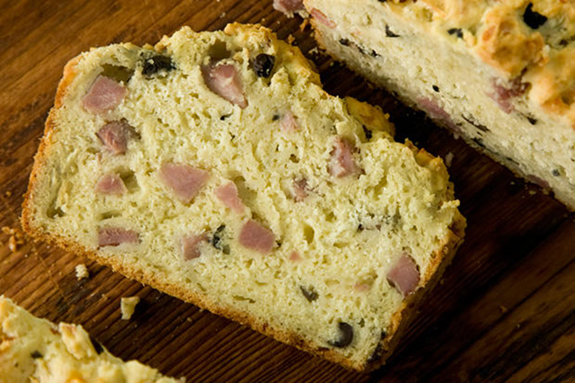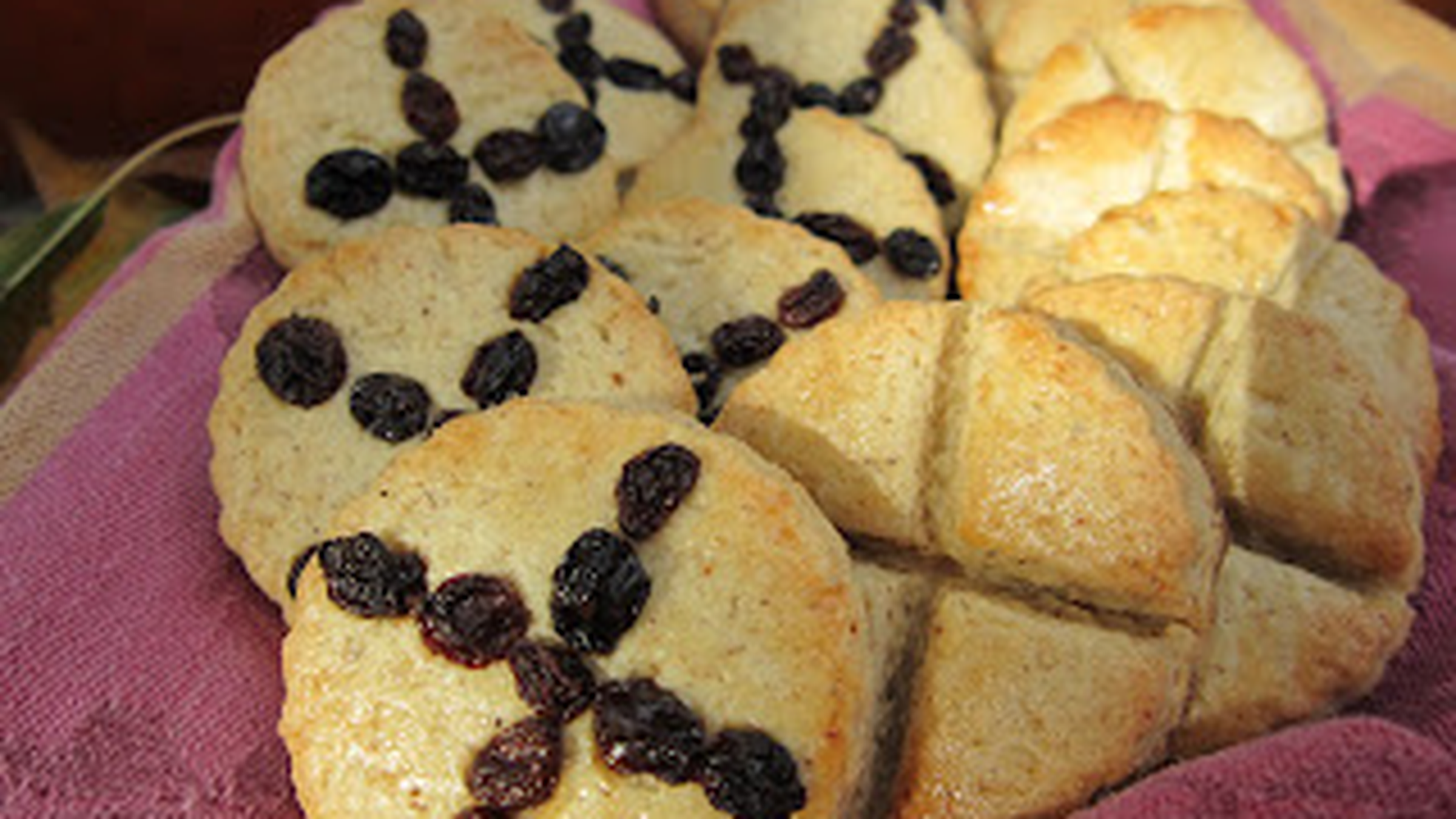A soul! A soul! A soul cake!
Please, good Missus, a soul cake.
An apple, a pear, a plum, a cherry,
Any good thing to make us all merry:
One for Peter; two for Paul;
Three for Him who made us all.
—Traditional English folk song
Devotees of the gentle folksingers Peter, Paul and Mary will recall these lyrics but may not be aware of the story behind the song, a tale extending far into those medieval centuries, which used to be called the Ages of Faith when belief in God permeated daily life.
Among many rampant distortions about the Middle Ages is that everyone in Europe was miserable. According to popular conception, rapacious bishops and greedy priests terrified illiterate nobles and overworked peasants with a wrathful, capricious God who would cast believers into eternal damnation unless placated by mechanically recited prayers and forced almsgiving. This sordid medievalism is also seen in films and television series.
Mostly, it’s bosh.
During the Ages of Faith, most people usually led happy, productive and reasonably contented lives. Granted, craftsmen, peasants and serfs worked from morn to sunset, and what was mostly rural living was difficult. Yet it wasn’t all hard work and drudgery.
Within the Catholic liturgical year, all 52 Sundays and 30-33 holy days of obligation were days of complete rest from work. There were also some 70 saints’ days such as Michaelmas in September, and Martinmas in November. Special festival days of merriment occurred during Christmastide, including Epiphany and Candlemas, during Paschaltide, the 50 days celebrating Easter; and Whitsuntide, the octave of Pentecost. Adventtide and Lent, especially during Passiontide, the final two weeks of Lent, were more somberly commemorated.
In all, about three months of each year were given over to breaking up daily routine while providing rest from manual labor. During these festivals, the Church encouraged games, recreation, theatricals, music and song.
Within this ancient and honorable tradition, Hallowtide was and remains part of the liturgical year, lasting from the evening of Oct. 31 through Nov. 2. On these days, all saints in heaven, known and unknown, are venerated and their intercession begged, and relief is offered the holy souls in purgatory through prayers and special Masses.
And that brings us back to the soul cakes.
The origin of the Hallowe’en (“Hallows even”) tradition of “Trick or Treat” began with prayer and sweets. The trickery wasn’t part of the original tradition, but the "treatery" was.
During the even (late afternoon or evening) of the vigil of the feast of All Saints — All Hallows in Olde English — children in cities, towns, villages and hamlets would go “souling” — strolling door-to-door, calling on their extended families, friends and neighbors, singing ancient “souling” hymns, offering to pray for those in purgatory.
After those prayers, grateful housewives presented singers with small, round loaves of sweet quickbreads or small cakes. The dough, a cross between that used for scones and biscuits, came out of the oven looking like muffins or thick cookies. Made with raisins or currants, each was marked by a cross. The singers ate them still warm.
When life was much harder, families sought an afterlife of heavenly repose in the glory of God. There was a much more vibrant belief in the communion of saints — that those living on earth, the Church Militant, are intimately connected to the faithful departed, the Church Suffering in purgatory and the Church Triumphant in heaven, united in Christ by baptism and prayer. Catholics believe St. Paul when he writes that nothing, not even death, can separate us from the love of Christ (Romans 8:31-39).
A time for laughter
Now, when’s the last time you heard that Hallowe’en is a time for laughing at the devil?
Never? Well, I’m not surprised. Our sophisticated age has cast off many a fine, old Catholic tradition. It’s unfortunate. Children crave traditions. When God is divorced from family life, children’s lives are the poorer for the loss.
Catholic children used to be taught that Satan, immersed as he is in spiteful arrogance and narcissistic conceit, absolutely hates being laughed at. All narcissists fear laughter. Satan loathes being reminded that he has forever lost the divine joy of the Beatific Vision.
Regrettably, mistaken fundamentalist attitudes have come to fore. Hallowe’en is regarded as a night of witchcraft, to be feared and shunned; a night given over to evil; a night belonging to Satan and his demons.
Catholic tradition has a much healthier spirituality. We yield nothing to evil; surrender nothing created by God to Satan. For centuries, we Catholics used to sing hymns extolling Christ’s victory over “death, hell and sin / which Adam’s transgression had wrap’t us in.” We were then advised in song to “Rejoice and be merry, set sorrow aside!” because, on Calvary, Satan lost and death fell victim to life everlasting.
The true reason for wearing costumes betokening scary ghosts, red-suited devils, and evil witches is to ridicule, respectively, “death, hell and sin.” Soul cakes, always marked by a cross, were, therefore, the family’s humble sacramental reminder of the Most Blessed Sacrament and the joy of the wondrous, heavenly Supper of the Lamb to which all good Catholics aspire.
Sean M. Wright is an award-winning journalist, Emmy-nominated TV writer, a Master Catechist for the Archdiocese of Los Angeles, and co-author of "The Sherlock Holmes Cookbook." He replies to comments sent him at [email protected].

Soul cakes recipes
Each season of the year and the holy days therein often suggest expressions of Christian teaching brought into daily life. Even after the Protestant Reformation, such cultural traditions did not die out. The tradition of soul cakes continued in many European nations. Two recipes follow, one customarily sweet; the other a savory. They are accompanied by methods for mulling apple cider or, for something a tad stronger, mulling ale.
Medieval Souling Cakes (sweet)
Ingredients
- 1 ½ cup plain flour (sifted)
- ¾ cup sugar
- 1 ½ cubes of butter (softened & diced)
- 1/2 tsp ground cinnamon
- 1/2 tsp ground mixed spice
- 1/2 tsp ground nutmeg
- 1 egg (beaten)
- 2 tsp of white wine vinegar
- ½ cup raisins or currants (optional)
Instructions
Preheat oven to 400 F; grease 2 flat cookie sheets: set aside.
In a mixing bowl, thoroughly whisk the sifted flour, spices, and sugar. Rub in the diced butter until the mixture resembles fine breadcrumbs. Add in the beaten egg and white wine vinegar and mix with a wooden spoon until a firm dough is made. Cover bowl with a towel and place it in the refrigerator for no less than 20 minutes.
Flour a working surface and roll out the dough to about ¼ inch thick. With a circular pastry cutter (or, in a pinch, the lid from a mayonnaise jar) cut dough into rounds. Place these rounds on the greased cookie sheets. With the wooden spoon’s handle or with a knife, press or incise a cross shape into the top of each round. Press the raisins or currants into the groove of the cross or pressed into the quadrants between the lines as desired.
Bake for 15 to 20 minutes at 400 F until slightly colored. This recipe makes 14 soul cakes, best when served warm but they’re just fine after cooling.
French Ham and Cheese Souling Cakes (savory)
Ingredients
- 2 1/2 cups all-purpose flour
- 2 1/4 teaspoons baking powder
- 1/2 teaspoon fine salt
- 1/4 teaspoon baking soda
- 1/4 teaspoon freshly ground black pepper
- 1 1/4 cups shredded Gruyère cheese (about 3 1/2 ounces)
- 1 1/4 cups small-dice cooked ham (about 7 ounces)
- 1/3 cup small-dice pitted Niçoise olives (about 1 1/4 ounces) (Have some more olives in reserve to quarter for the tops)
- 2 large eggs
- 3/4 cup whole milk
Instructions
This savory soul cake recipe is adapted from a quickbread loaf recipe. The soul cakes will have an extra punch of flavor from the briny Niçoise olives. In France, similar rustic quickbreads called gâteaux are served as snacks.
Place a rack in the middle of the oven and preheat to 350°F.
Whisk flour, baking powder, salt, baking soda, and pepper together in a large bowl until aerated and any large lumps are broken up. Add the cheese, ham, and olives and toss in the flour mixture until the pieces are separated and evenly coated; set aside.
In a medium bowl whisk eggs, milk, and melted butter until smooth. Add this egg mixture to the flour mixture and stir until the flour is just incorporated, being careful not to over mix. It is just fine if a few streaks of flour are present; the batter will be quite thick.
With a rubber spatula, scrape the batter into a standard 12-well muffin pan. Be sure to coat the wells generously with butter first. Smooth the batter and press quartered olives into the tops in the shape of a cross. Bake for 20 to 25 minutes, until a toothpick inserted into the center comes out clean (test several spots since you may hit a pocket of cheese). Let cool for 10 minutes before attempting to remove the cakes from the pan. If desired, you may let them finish cooling on a wire rack.
All Saints Day Mulled Apple Cider
This warm fruity drink is a wonderful addition for All Saints' Day celebrations. This recipe yields eight servings.
Ingredients
- Half-gallon apple cider
- 2 tsp. orange zest
- 3 cinnamon sticks
- 3 whole cloves
- 1/8 tsp. ground allspice
- 1/2 cup fresh cranberries
Method
Mix ingredients in large saucepan. Barely bring to a simmer over lowest heat setting. Do not allow cider to boil. Cook for 20 minutes. Strain spices and berries from cider by pouring through mesh sleeve/cheesecloth. Serve hot.












